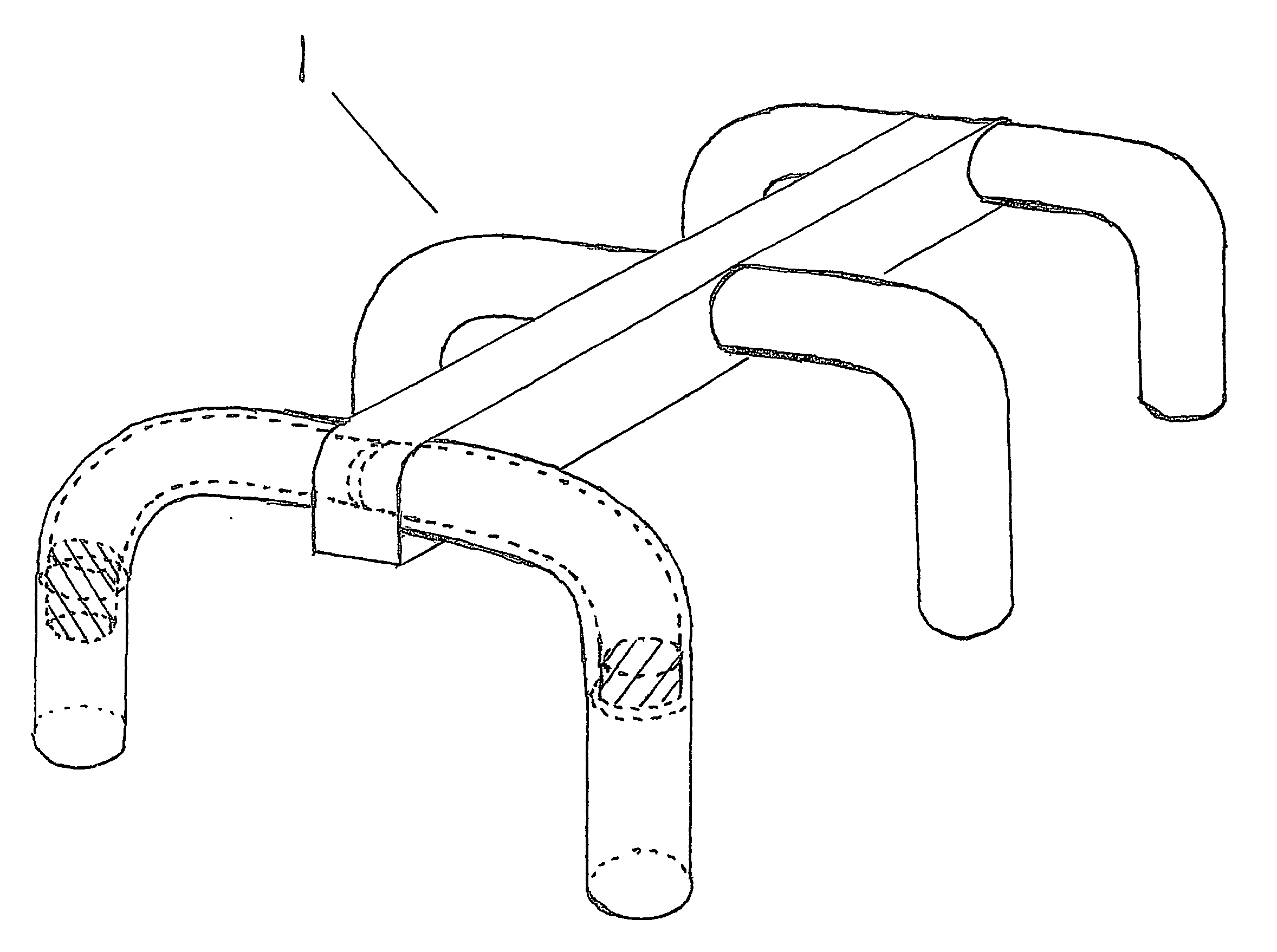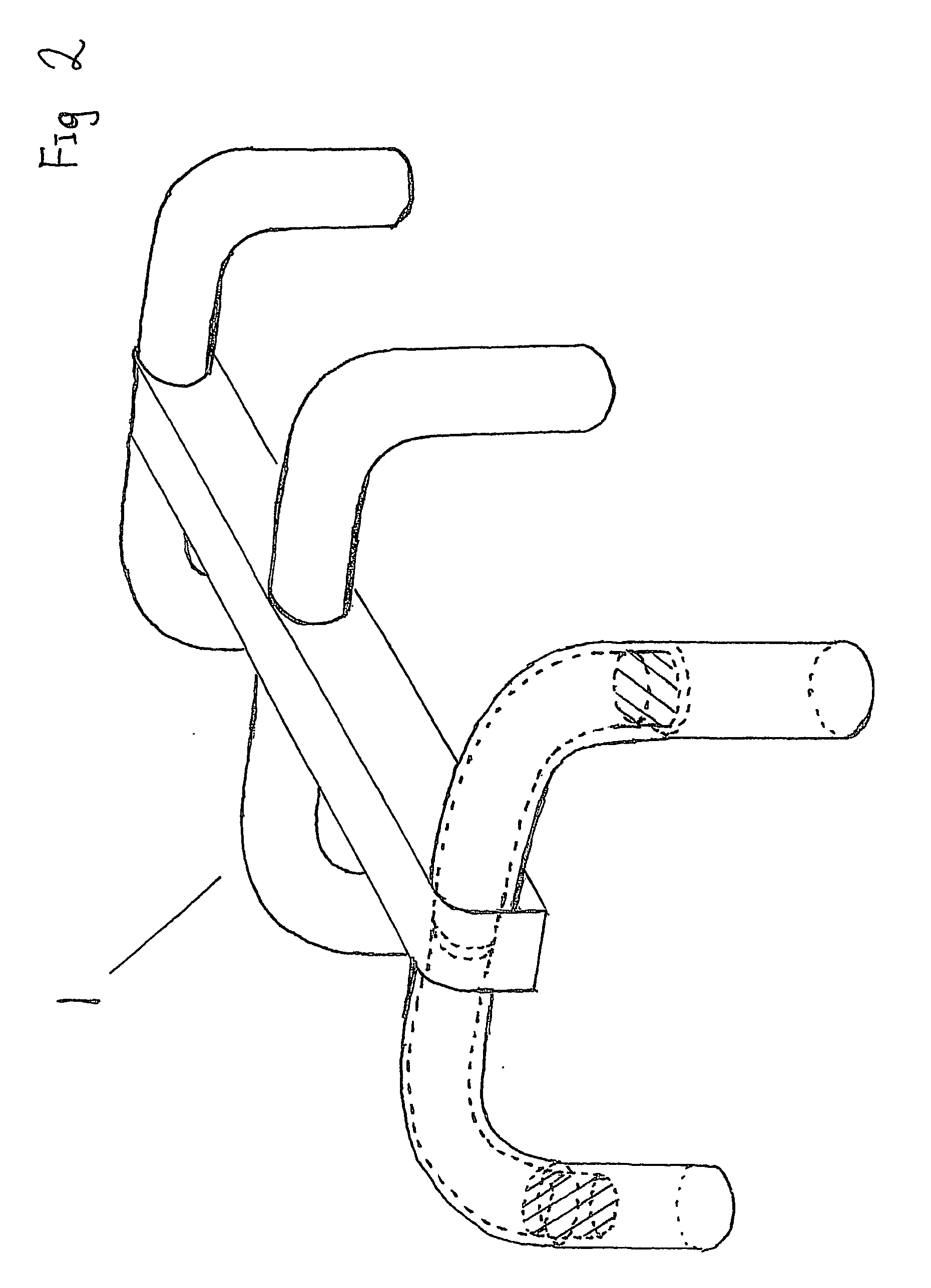Devices to conduct current to or from the electrodes in electrolysis cells, methods for preparation thereof, and an electrolysis cell and a method for production of aluminium by electrolysis of alumina solved in a melted electrolyte
a technology of electrolysis cell and electrode, which is applied in the direction of contact member assembly/disassembly, electrode, photosynthesis process, etc., can solve the problems of significant loss, reduced current efficiency and heat loss, and energy cost is a very significant part of the total cos
- Summary
- Abstract
- Description
- Claims
- Application Information
AI Technical Summary
Benefits of technology
Problems solved by technology
Method used
Image
Examples
Embodiment Construction
[0054] An anode hanger according to the invention was prepared by the preferred method of the invention described for the device according to claim 3. Friction welding was used for joining towards the massive steel nipples and a smaller steel nipple, and from the smaller steel nipple to the core of 99.5% by weight pure aluminium. Measurements of electrical parameters were between the points a and b on FIG. 3, and the temperature was measured under b in FIG. 3. The massive bolt of pure aluminium in the core of the nipples had a diameter of 100 mm, the friction welded smaller steel nipple had a diameter of 100 mm and a length of 50 mm, the outer steel lining was a pipe with an outer diameter of 140 mm and an inner diameter of 100 mm. The lower massive steel nipple had a diameter of 140 mm, The upper part with dimensions of 170.times.120 mm of pure aluminium was arc welded to the yoke and the upper part of the yoke was encased with a steel lining by manual arc welding. Remark that the ...
PUM
| Property | Measurement | Unit |
|---|---|---|
| temperature | aaaaa | aaaaa |
| temperature | aaaaa | aaaaa |
| temperature | aaaaa | aaaaa |
Abstract
Description
Claims
Application Information
 Login to View More
Login to View More - R&D
- Intellectual Property
- Life Sciences
- Materials
- Tech Scout
- Unparalleled Data Quality
- Higher Quality Content
- 60% Fewer Hallucinations
Browse by: Latest US Patents, China's latest patents, Technical Efficacy Thesaurus, Application Domain, Technology Topic, Popular Technical Reports.
© 2025 PatSnap. All rights reserved.Legal|Privacy policy|Modern Slavery Act Transparency Statement|Sitemap|About US| Contact US: help@patsnap.com



